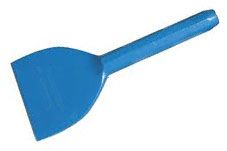We may be compensated if you purchase through links on our website. Our team is committed to delivering honest, objective, and independent reviews on home products and services.
Installing wall-to-wall carpeting can transform the look and feel of any room, providing comfort and style underfoot. While it may seem like a daunting task, you can achieve professional-looking results with the right tools and techniques. This Old House host Kevin O’Connor teams up with a flooring expert to walk through the step-by-step process of installing wall-to-wall carpeting, from preparing the subfloor to stretching and securing the carpet.
Preparing the Room for Carpeting
Before getting started, prep the room so everything goes smoothly during installation.
Removing Old Flooring
Begin by removing any existing flooring, like old carpet and padding. Use a pry bar to lift the carpet’s edges and roll it up for easy disposal. If the old tack strips are in bad shape or not compatible with the new carpet, remove those, too.
Cleaning and Inspecting the Subfloor
Once the old flooring is out, vacuum the subfloor thoroughly to clear away any debris. Check for damage, like loose boards or uneven spots, and fix any issues before moving forward with the carpet installation.
Installing Tack Strips
Tack strips are what hold the carpet in place around the edges of the room. In the video, O’Connor notes that the existing tack strips are in good shape, but the expert recommends adding another strip for extra grip. This added support helps the carpet stay secure over time.
Gathering Tools and Materials
You’ll need the following items to tackle this DIY project:
- Bolster chisel
- Carpet knife
- Carpet trimmer
- Cushion-back cutter
- Hammer
- Knee kicker
- Power carpet stretcher
 Hammer
Hammer Carpet knife
Carpet knife Cushion-back cutter
Cushion-back cutter Knee kicker
Knee kicker Bolster chisel
Bolster chisel Carpet trimmer
Carpet trimmer Power carpet stretcher
Power carpet stretcher
Laying the Carpet Padding
Padding not only adds comfort underfoot but also helps your carpet last longer. Here’s how to install it:
- Apply adhesive: Apply padding adhesive along the walls and at all seams. This step will prevent the padding from shifting or separating over time.
- Position the padding: Roll out the padding across the room, positioning it carefully. Fold it upon itself to make it easier to handle during installation.
- Secure the padding: Once the padding is in place, secure the seams with duct tape. This helps create a smooth, uniform surface for the carpet.
Cutting and Fitting the Carpet
Getting the carpet cut and fitted properly is what gives the job a professional finish. In the video, the expert shows how to achieve this:
- Roll out the carpet: Start by rolling out the carpet. For areas like hallways, create a flap to drop the carpet through in one piece, eliminating the need for additional seams.
- Cut around corners: Use a sharp carpet knife to cut the carpet around wall corners, making careful cuts for a tight fit.
- Create seams: When you need to join two pieces of carpet, use a cushion-back cutter to trim the edges. This tool makes a clean, straight cut to blend seams in nicely.
Carpet Seaming Techniques
Getting the seams right creates a smooth look and a long-lasting installation. Follow these steps demonstrated by the expert in the video:
- Apply latex seam sealer to the carpet edges and allow it to dry.
- Align the seams between carpet pieces.
- Place seam tape underneath the joined edges.
- Use a seaming iron to activate the adhesive on the tape.
Securing the Carpet
Once the carpet is cut and seamed, it’s time to secure it in place. This process involves several steps and specialized tools:
- Use a knee kicker: A knee kicker is used to hook the edge of the carpeting onto the tack strips. The expert shows how to position the tool and apply just enough force to secure the carpet without overstretching it.
- Employ a stair tool: After using the knee kicker, use a stair tool (also called a bolster chisel) to press the carpet onto the tack strip, making sure it’s securely attached along the edges.
- Trim excess carpet: A double-blade wall trimmer is ideal for cutting away excess carpet along the walls. This tool ensures a clean cut right up to the baseboard.
Stretching the Carpet
You have to stretch the carpet to achieve a wrinkle-free finish. The expert demonstrates how to use a power stretcher to get the job done right.
- Set up the power stretcher: Position the power stretcher with its base against a secured wall. Adjust the length using the provided tubes to reach across the room.
- Stretch the carpet: Apply even pressure with the power stretcher to pull the carpet tight across the floor. Stretch the carpet toward each wall, securing it to the tack strips as you go.
- Make final adjustments: After stretching, use the knee kicker and stair tool to make final adjustments. Check that the carpet is securely fastened around the entire perimeter of the room.
Finishing Touches
To complete the installation, pay attention to these final details:
- Secure the carpet at doorways using transition molding.
- Trim any remaining excess carpet carefully.
- Vacuum the newly installed carpet to restore the pile.
With the right tools and a bit of patience, installing wall-to-wall carpeting can be a manageable DIY project. By prepping the room, cutting and seaming carefully, and stretching the carpet, you can achieve a professional look that will hold up for years.







